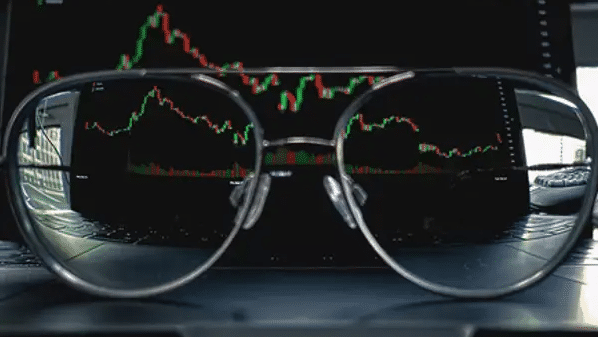Domestic indices fell substantially in the shortened market week, reflecting dismal global markets. The bourses are under pressure as the dollar index rises, FIIs continue to sell domestic equities, and commodities prices remain high.
Also Read| Trade Setup: Top 15 things to know before market opens on May 9, 2022
The Sensex fell below the critical 55,000 threshold. The Sensex fell 2,225.29 points, or 3.9%, in the week ending Friday, May 6, 2022, to close at 54,835.58. The Nifty 50 index fell 691.30 points, or 4.04%, to 16,411.25. The BSE Mid-Cap index fell 1288.43 points, or 5.28%, to 23,129.61. The BSE Small-Cap index fell 1519.51 points, or 5.31%, to 27,092.41.
Also Read| LIC IPO live updates: Largest public issue opens for subscription
How equity benchmarks performed on a weekly basis:
Monday, May 2, 2022
The stock benchmarks concluded the day with minor losses, extending losses for the second day. The S&P BSE Sensex dropped 84.88 points, or 0.15%, to 56,975.99. The Nifty 50 index slid 33.45 points, or 0.20%, to 17,069.10.
Tuesday, May 3, 2022
On Tuesday, May 3, 2022, the domestic stock market was closed due to Ramzan Eid.
Also Read| L&T Infotech, Mindtree announce merger to create large scale IT company
Wednesday, May 4, 2022
Domestic stocks finished on Wednesday with severe losses, falling for the third day in a row. Indices began near the flat line but fell dramatically in the afternoon session after the Reserve Bank of India (RBI) issued an unexpected 40 basis point interest rate rise. The S&P BSE Sensex lost 1,306.96 points, or 2.29%, to 55,669.03. The Nifty 50 dropped 391.50 points, or 2.29%, to 16,677.60.
Also Read| Tata Power Q4 Results: Profit rises 31% to Rs 632 crore, revenue surges 15%
Thursday, May 5, 2022
On Thursday, key benchmarks closed with marginal increases, reflecting conflicting global indications. The S&P BSE Sensex climbed 33.20 points, or 0.06%, to 55,702.23. The Nifty 50 rose 5.05 points, or 0.03%, to 16,682.65.
Also Read| Zomato’s Deepinder Goyal to donate Rs 700 crore ESOPs to Future Foundation
Friday, May 6, 2022
Domestic stock gauges concluded on Friday with sharp drops, mirroring bearish global indications. The S&P BSE Sensex lost 866.65 points, or 1.56%, to 54,835.58. The Nifty 50 fell 271.40 points, or 1.63%, to 16,411.25.
Also Read| Reliance Q4 Results: Profit rises 22% to Rs 16,203 crore, revenue grows 36%
What happened in the Global markets:
India
The Monetary Policy Committee (MPC) of the Reserve Bank of India (RBI) resolved to convene an off-cycle meeting on the 2nd and 4th of May 2022 to examine the emerging inflation-growth dynamics and the effect of developments after the MPC meeting on the 6th and 8th of April 2022.
Also Read| Why interest rates are being hiked globally?
The MPC anticipates inflation to be high, necessitating decisive and calibrated actions to stabilise inflation expectations and limit second-round consequences. The MPC unanimously resolved on Wednesday (4 May) to raise the policy repo rate by 40 basis points to 4.40%, effective immediately, based on this assessment of the current condition and prospects.
Also Read| India orders all imported coal plants to operate at full capacity
The MPC unanimously opted to keep policy accommodative while focused on removing it in order to keep inflation within the target range while boosting growth.
Also Read| Explained: Changes in repo rates and their impact on stock market
China
As a result of Covid lockdowns, China’s factory activity declined at a faster rate in April. According to statistics released by the National Bureau of Statistics on Saturday, the official manufacturing Purchasing Managers’ Index fell to 47.4 in April, marking the second consecutive month of contraction after a reading of 49.5 in March.
Also Read| Explained: How the crypto landscape has changed in India
According to a private-sector survey released Thursday, China’s services sector activity fell even more in April. The Caixin services Purchasing Managers’ Index (PMI) fell to 36.2 in April, down from 42 in March. The S&P Global/CIPS manufacturing Purchasing Managers’ Index (PMI) increased to 55.8 in April from a 13-month low of 55.2 in March, a somewhat larger gain than the 55.3 in an initial ‘flash’ assessment.
Also Read| Explained: Impact of Indonesia’s palm oil ban on India
United States
On Wednesday, the Federal Reserve of the United States raised its benchmark short-term interest rate by 50 basis points, its most aggressive move since 2000. Powell discussed the solid economy, but also the suffering people have been experiencing at the grocery store and gas pump, claiming that higher interest rates are the solution.
Also Read| SpaceX, Tesla and now Twitter: The many businesses of Elon Musk
The Fed also announced plans to decrease its near $9 trillion balance sheet, initially by $47.5 billion per month beginning in June and gradually increasing to $95 billion per month. Over the next three years, its record size will be reduced by about $3 trillion.
Also Read| Explained: Difference between RBI’s accommodative, neutral & hawkish stance
The United States’ trade imbalance increased 22.3% to $109.8 billion in March, according to the Census Bureau and the Bureau of Economic Analysis. In March, US imports grew 10.3% to $351.5 billion, while exports rose 5.6% to $241.7 billion.







